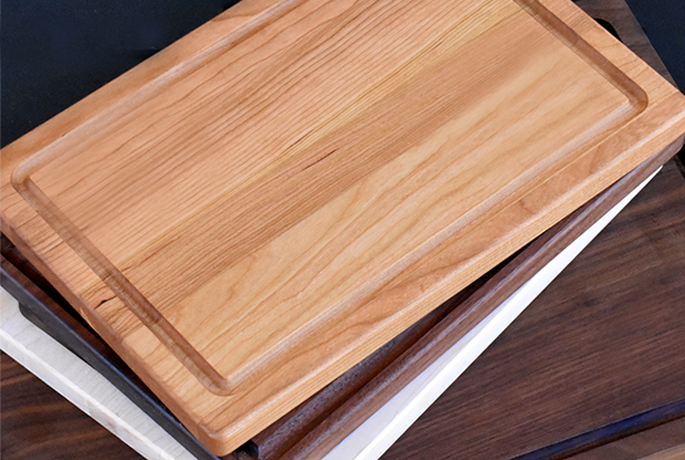|
The reason people are choosing wood over plastic for their cutting boards is not only a matter of aesthetic preference. There are several reasons why wood is a better choice when it comes to what's underneath your knife. There are also unique advantages with regards to respective wood species. Let's take a look at these characteristics leading hardwood cutting boards to be a preferred choice among many cooks today. Characteristics of Hardwood Cutting Boards Hardwood cutting boards are closed grain which means that the pores are very small, almost invisible to the naked eye. These are preferable to open grain woods because they help keep out moisture and juices that could lead to stains or mold on your cutting board. Contrary to popular belief, a wooden cutting board does not prevent bacteria from being washed away. Of course, with proper care and maintenance, the board prevents bacteria from being able to survive by cutting it off from oxygen. Pounds force is a term used to describe the ability of the wood to resist cuts and dents caused by normal use. The better the pounds force of the wood species, the more durable it will be. The knife will have more traction in variants of cutting boards assembled with end-grain. These kinds of boards will have extraordinary durability. This is because the basic cuts and scrapes that effect the board will eventually bounce back into place. Among the many species of hardwood that exist today, three are considered a better choice for their overall rating when taking these characteristics into account. Let's take a look at these more desirable woods used to make cutting boards. Maple In terms of pounds force, maple ranks the highest. With 1450lbf, a cutting board made from maple should outlast just about any other cutting board out there. Better prices due to a higher supply of maple hardwood. Cherry In terms of pounds force, this wood has 950lbf. Although it is hardwood, it will require sanding before maple and walnut would. The reddish hue can mask stains that maple cannot. Walnut Walnut is second with 1010lbf. Its dark color will mask stains quite effectively and the general robustness of the wood make it a popular choice. Least susceptible to warping and cracking but is more expensive. We hope that this helps you find the right cutting board for you! |

